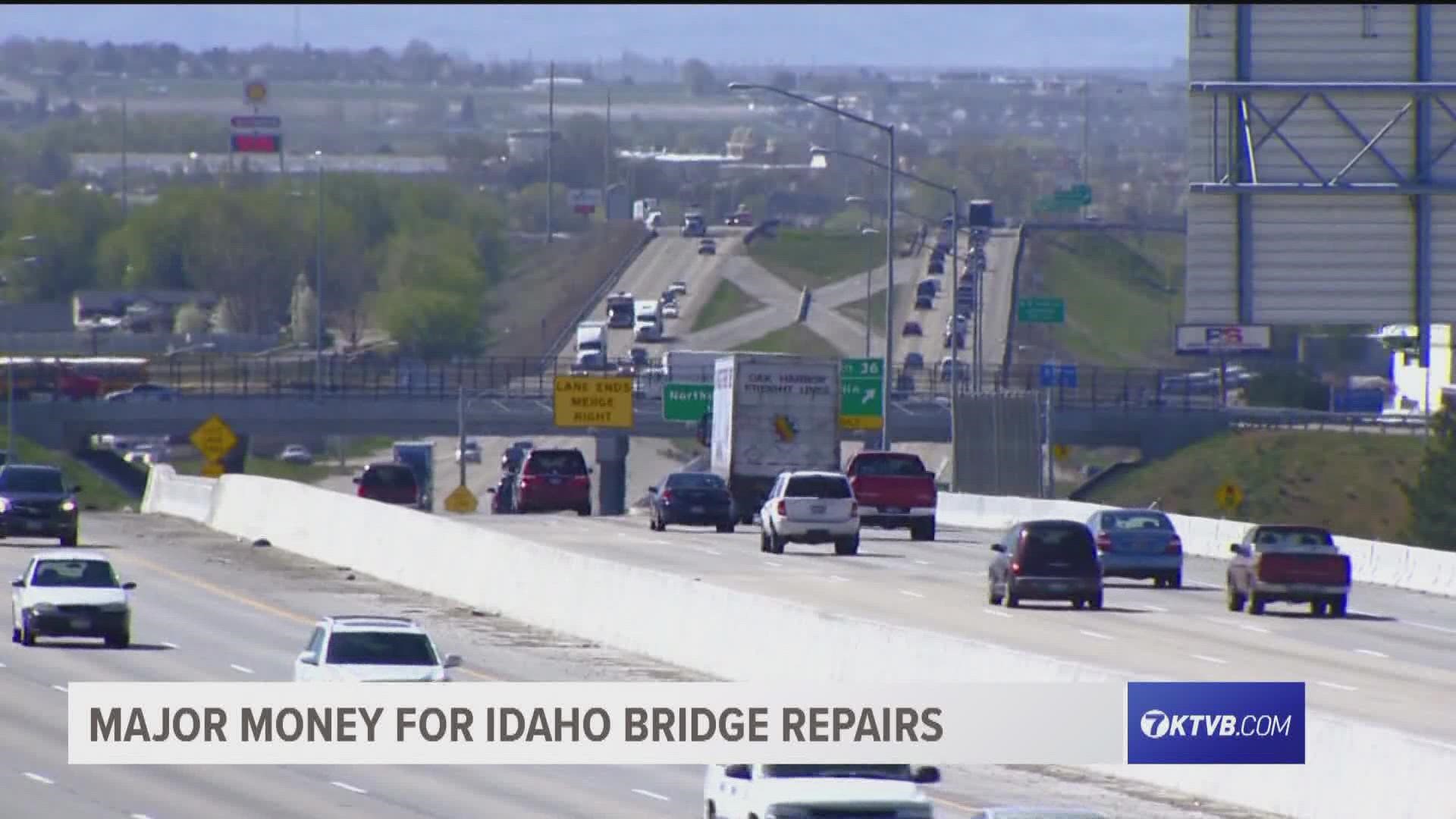BOISE, Idaho — So, you're driving down the road and you come to a bridge. Do you ever ask yourself, how sturdy is that bridge? Is it safe? How old is it? The state is working to alleviate some of those worries and to help traffic flow smoother all around Idaho.
Governor Brad Little recently signed Senate Bill 1359 into law to take care of one-third of Idaho's bridge maintenance backlog. It pumps $200 million into repairs and improvements on bridges across the state.
Laila Kral, a Local Highway Technical Assistance Council Administrator, told KTVB, 428 locally controlled bridges received a poor rating in their last inspection. The funding would address a third of those.
There are 356 bridges that are so outdated, they have load restrictions. The Idaho Transportation Department says that forces truck drivers to take longer routes, which wastes time and costs more.
The $200 million from the state's general fund will go to local highway districts across the state.
Kral talks about the importance of this major chunk of funding and the safety of Idaho's bridges. Excerpts are below:
Laila Kral: "Yeah, so this is a monumental investment by the governor and the legislature into the condition of local roads, the repair, the replacement of those critical needs. We've never seen an investment this large, and with the state of the local bridges we know that we can get a lot done with this money."
Doug Petcash: "And what is the overall state of the state's bridges?"
Laila Kral: "I'm going to focus on local bridges today being as I'm representing the locals. There are 2,474 locally owned bridges in the state. So those are bridges owned by cities, counties with road and bridge responsibility and highway districts. Of those 40%, a little over 40%, are over 50 years old, and that is the average design life of those structures, but looking forward, in the next 10 years we're going to be closer to 60% of the structures over 50 years old."
Doug Petcash: "With these bridges that are rated in poor condition, can people still feel safe driving across them?"
Laila Kral: "Yes. They can. That is why it is so important for the inspections to happen, and they have been on a regular basis. So on average, I would say every two years. Bridges that are poor or getting toward the end of their life are often inspected more frequently, six months to one-year intervals. So the inspectors are out there regularly checking on the condition of the bridges, and often they get closed or posted for loads. So we will get those postings from the transportation department inspection teams letting us know that a bridge has been posted, where maybe the load has been reduced down to just passenger vehicles or even closed. If they are unsafe they will not be driven on."
Local agencies can apply for the funds this year. The Local Highway Technical Assistance Council will distribute the money accordingly.
On this edition of Viewpoint, Kral also talks about the kinds of problems some of the bridges have, how the $200 million dollars will be distributed and how the LHTAC helps local highway jurisdictions.
Viewpoint airs Sunday mornings at 9 o'clock on KTVB.
Watch More 'Viewpoint':
See every episode in our YouTube playlist:

